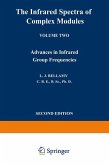This is the first book to adopt an unconventional approach to the theory of bonding and structure of molecules and solids. It explains the observed trends in this field within the framework of simple models of electronic structure. Emphasis is placed throughout on recent theoretical developments that link structural stability to the local topology or connectivity of the lattice through the moments of the electronic density of states. This modern real-space approach allows an immediate understanding of the origin of the structural trends within the periodic table for the elements and the AB structure map for binary compounds. Final year undergraduates and graduates following a course in quantum mechanics will find this book to be highly valuable. A chapter on basic concepts is included for readers new to the subject.
This book explains the observed trends in the bonding and structure of molecules and solids within the models of the electronic structure. Emphasis is placed throughout on recent theoretical developments that link structural stability to the local topology or connectivity of the lattice through the moments of the electronic density of states. The chemically-intuitive Tight Binding approximation provides a unified treatment of the covalent bond in small molecules and extended solids, while the physically-intuitive Nearly-Free Electron approximation provides a natural description of the metallic bonds in sp-valent metals. Unlike the conventional reciprocal-space formulation of band theory, this modern real-space approach allows an immediate understanding of the origin of structural trends within the periodic table for the elements and the AB structure map for binary compounds. Although this unique book is aimed primarily at postgraduates in physics, chemistry, and materials science, a chapter on basic quantum mechanical concepts is included for those readers with little or no basic knowledge of the subject.
Hinweis: Dieser Artikel kann nur an eine deutsche Lieferadresse ausgeliefert werden.
This book explains the observed trends in the bonding and structure of molecules and solids within the models of the electronic structure. Emphasis is placed throughout on recent theoretical developments that link structural stability to the local topology or connectivity of the lattice through the moments of the electronic density of states. The chemically-intuitive Tight Binding approximation provides a unified treatment of the covalent bond in small molecules and extended solids, while the physically-intuitive Nearly-Free Electron approximation provides a natural description of the metallic bonds in sp-valent metals. Unlike the conventional reciprocal-space formulation of band theory, this modern real-space approach allows an immediate understanding of the origin of structural trends within the periodic table for the elements and the AB structure map for binary compounds. Although this unique book is aimed primarily at postgraduates in physics, chemistry, and materials science, a chapter on basic quantum mechanical concepts is included for those readers with little or no basic knowledge of the subject.
Hinweis: Dieser Artikel kann nur an eine deutsche Lieferadresse ausgeliefert werden.








